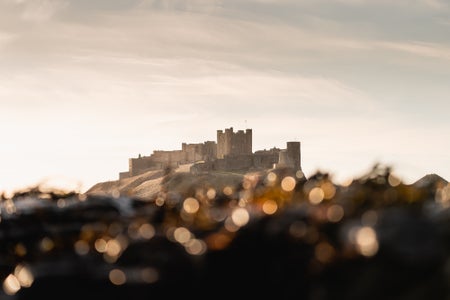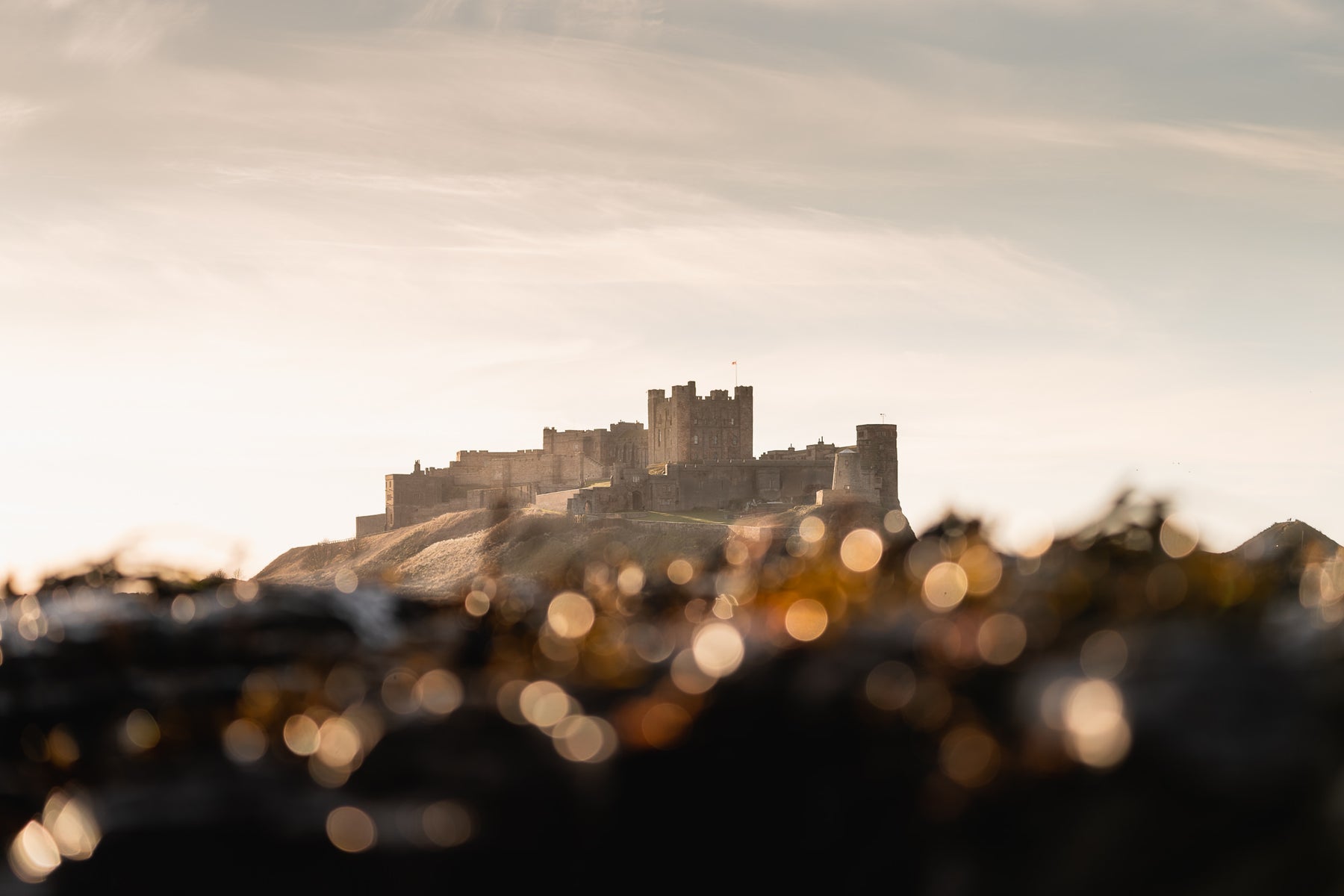Daryl Scott Walker (@darylswalker) is a commercial photographer and filmmaker known for his bold colors and stunning imagery of nature and adventure. He’s worked with clients such as the North Face, Hyundai, Jaguar, Land Rover and Columbia. Walker is passionate about nature and the environment and he's built a camera and lens kit that ensures he has the perfect tool for any situation. He pairs his Sony Alpha 7 IV with Sony G Master zooms and fast, rugged Sony primes to have the ideal combination for the job. Walker gave us a tour of his camera bag and what might be the perfect overall lens quiver for a multi-faceted hybrid content creator.
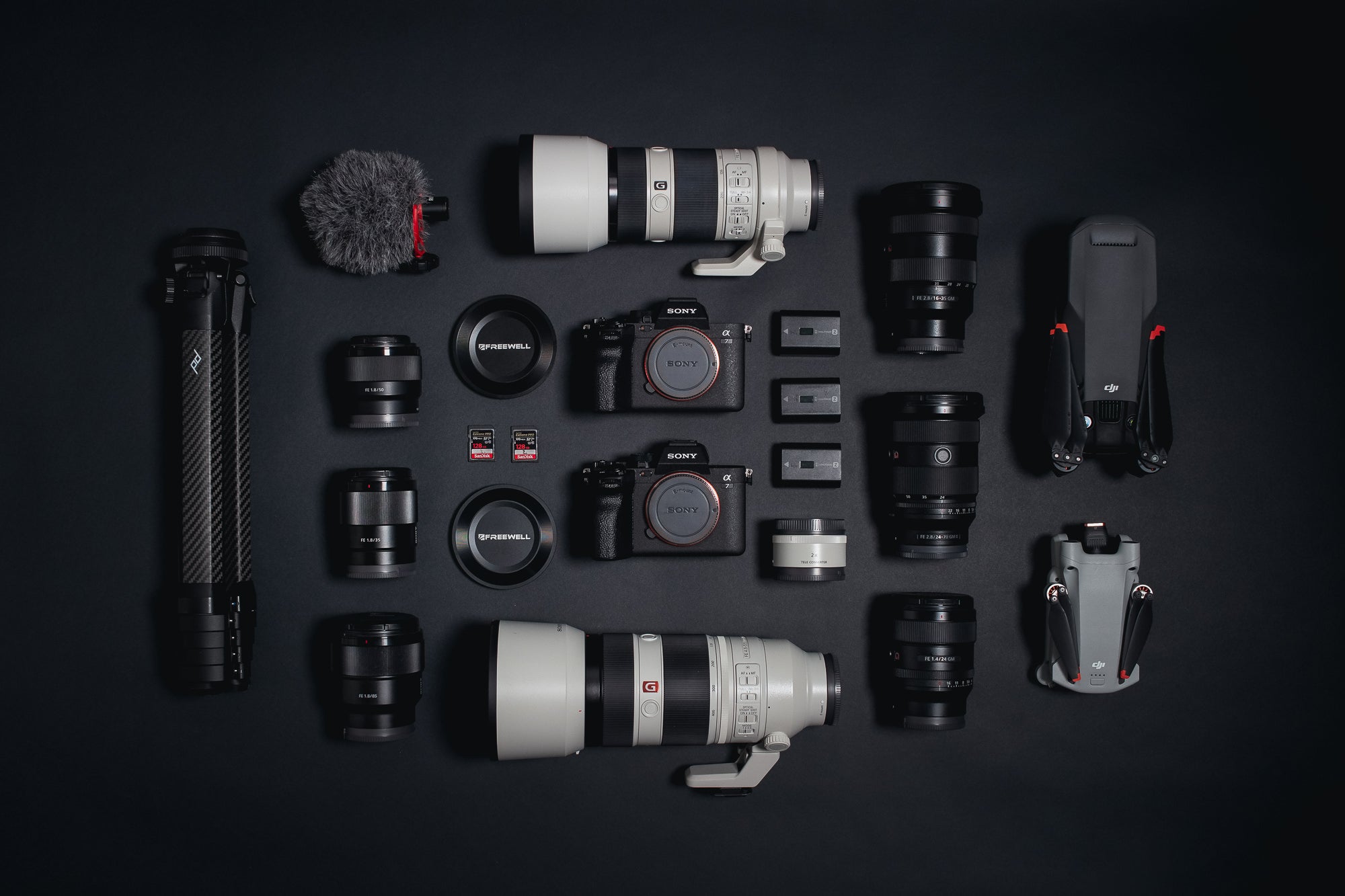
This pro is known for his bold colors and stunning imagery, and he has built an ideal combination of G Master zooms and fast primes for hybrid content creation.
Cameras
Sony Alpha 7 IV (2): Having previously owned two Sony Alpha 7 III’s, I upgraded to the new Sony Alpha 7 IV last year to take advantage of the improved autofocusing, Eye-AF, the new form factor, hybrid capabilities of both photo and video, and its ability to shoot in 4:2:2 10 bit 4K. It’s such an enjoyable body to use and the larger sensor dimensions allow me to punch in a little more in post production.
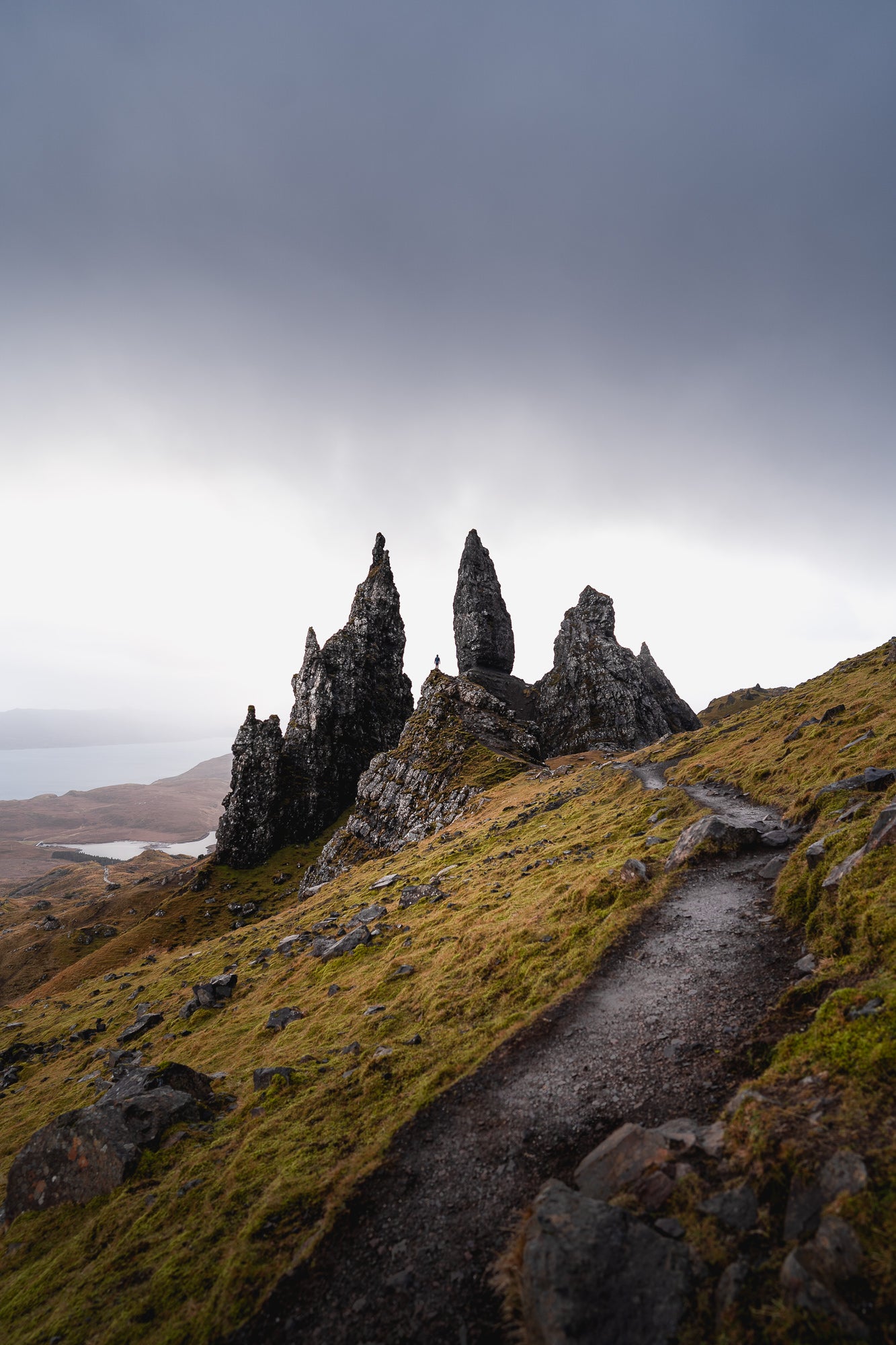
“Dolomiti Tre Cime, catching a lone walker heading up to The Time during the morning blue hour.” Photo by Daryl Scott Walker. Sony Alpha 7 IV. Sony 24-70mm f/2.8 G Master II. 1/160-sec, f/2.8, ISO 500
Having two cameras that are exactly the same, not only allows a backup body, but for commercial shoots, weddings or video productions it means I am able to shoot with different focal lengths at once. This not only saves time in changing lenses when things are fast paced but also helps maintain image quality across both of my cameras.
The rolling shutter of the Alpha 7 IV is much improved over its predecessor. So 90% of the time I shoot in silent shutter mode, keeping my presence to a minimum but also this helps reduce the shutter count on each body. Overall the Alpha 7 IV is fantastic to use and I wouldn’t travel with anything else.
Lenses
Sony 16-35mm f/2.8 G Master: My first native Sony lens I purchased and this has been through everything with me. With my love for northern landscapes which have more volatile weather its perfect to have a fast zoom like this with weather sealing so you don’t need to change lenses too often. I’ve been out in the elements with the 16-35mm all day and it just keeps working.
This lens is always in my bag for adventures from the Faroe Islands and Iceland to capture the wide landscapes. Sometimes 16mm isn’t enough out there and I often do 6 or 9 shot panoramas to get the whole scene in the frame.
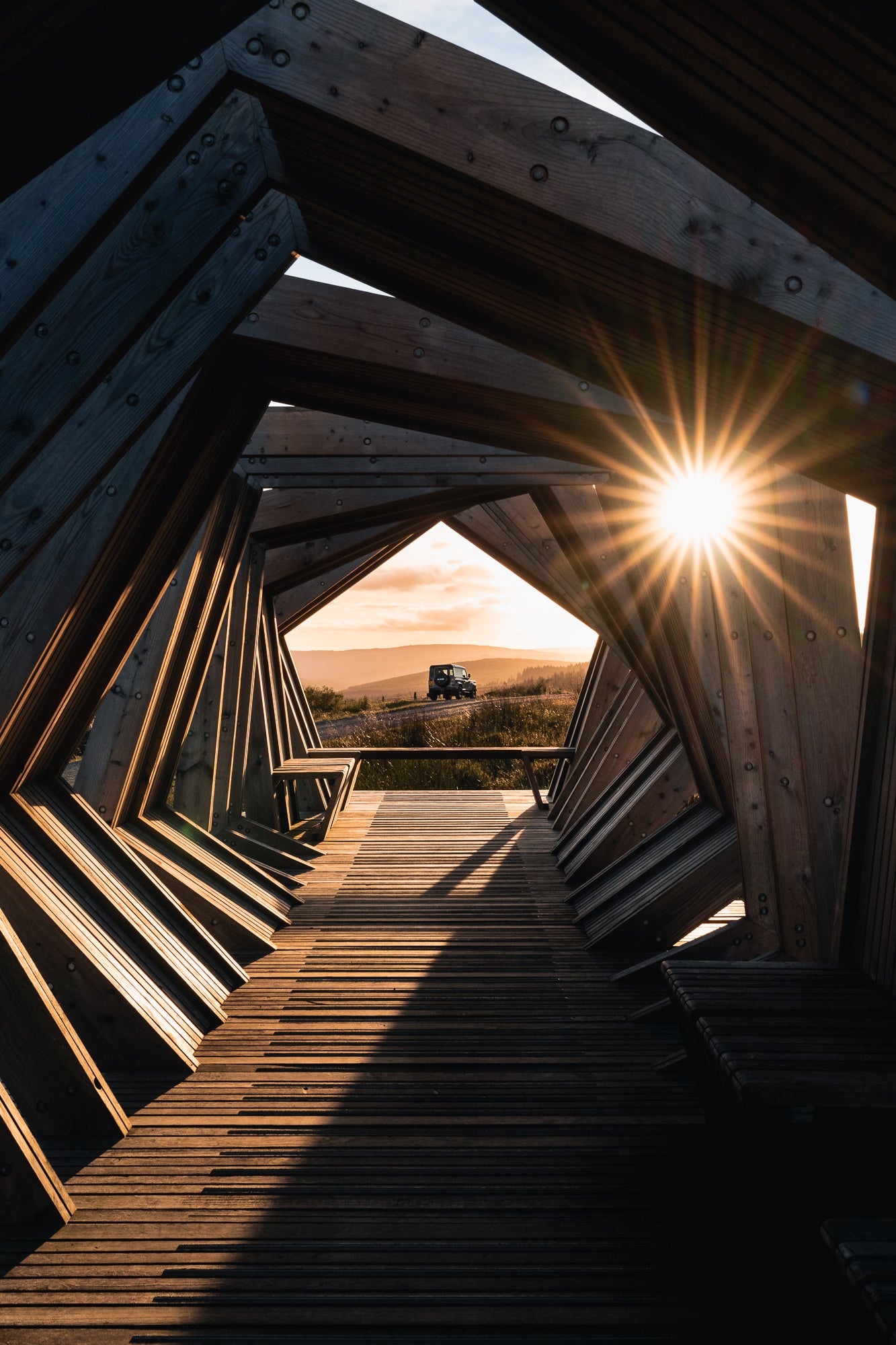
“Kielder Sunstar, shooting at f/16 to get as much depth as possible but also accentuate the sunstar.” Photo by Daryl Scott Walker. Sony Alpha 7 III. Sony 16-35mm f/2.8 G Master. 1/250-sec, f/16, ISO 1000
Sony 24-70mm f/2.8 G Master II: This lens is the most recent addition to my bag. I was never a lover of zoom lenses, opting to carry a bag of prime lenses instead. However when the new 24-70mm GM II was announced, I knew it would change my mind about zooms. The prime like sharpness, lightweight compact body of this lens means I very rarely take this off my camera. It’s the perfect lens for run and gun adventures where I want to shoot wide landscapes but then also grab details of the environment or subject. Wide open at f/2.8 it’s pin sharp edge to edge.

“Dolomiti Tre Cime, catching a lone walker heading up to The Time during the morning blue hour.” Photo by Daryl Scott Walker. Sony Alpha 7 IV. Sony 24-70mm f/2.8 G Master II. 1/160-sec, f/2.8, ISO 500
The lens is also my go to for any video work as its super capable at all focal ranges, and all I need for any shoot. You have a nice wide focal range with 24mm for those larger vistas and then 70mm for when you want to compress the scene.
I use this lens for not only my adventures but my commercial work. Recently I’ve found myself leaving some of my primes at home due to the incredible performance of this lens. If I had to use one lens for the rest of my life this is the one!

“Hyundai, using the 70mm focal length for some compression with the minimal background.” Photo by Daryl Scott Walker. Sony Alpha 7 IV. Sony 24-70mm f/2.8 G Master II. 1/250-sec, f/2.8, ISO 100
Sony 70-200mm f/4 G: My first ‘big’ zoom lens and one of the first Sony lenses I bought back in 2018. I don’t use it that often now (see the next lens) but its sharp, lightweight and with the Optical Steady Shot your able to shoot at the 200mm length with ease. Being lightweight its a lens I’ll use for longer days in the mountains where being light and nimble is key.

“Eystrahorn Geese, a rare moment with a flock of geese flying past an Icelandic mountain range.” Photo by Daryl Scott Walker. Sony Alpha 7 III. Sony 70-200mm f/4 G. 1/500-sec, f/4, ISO 1000
Sony 100-400mm f/4.5-5.6 G Master: When people ask me what my favorite lens is, they are surprised to hear its a telephoto zoom. The 100-400mm is on my camera always because over time I’ve learnt its 99.9% the lens I wish I had mounted when something spontaneous happens before me. Being a GM lens you get exceptional image quality, fast autofocus and the images this thing renders are beautiful.
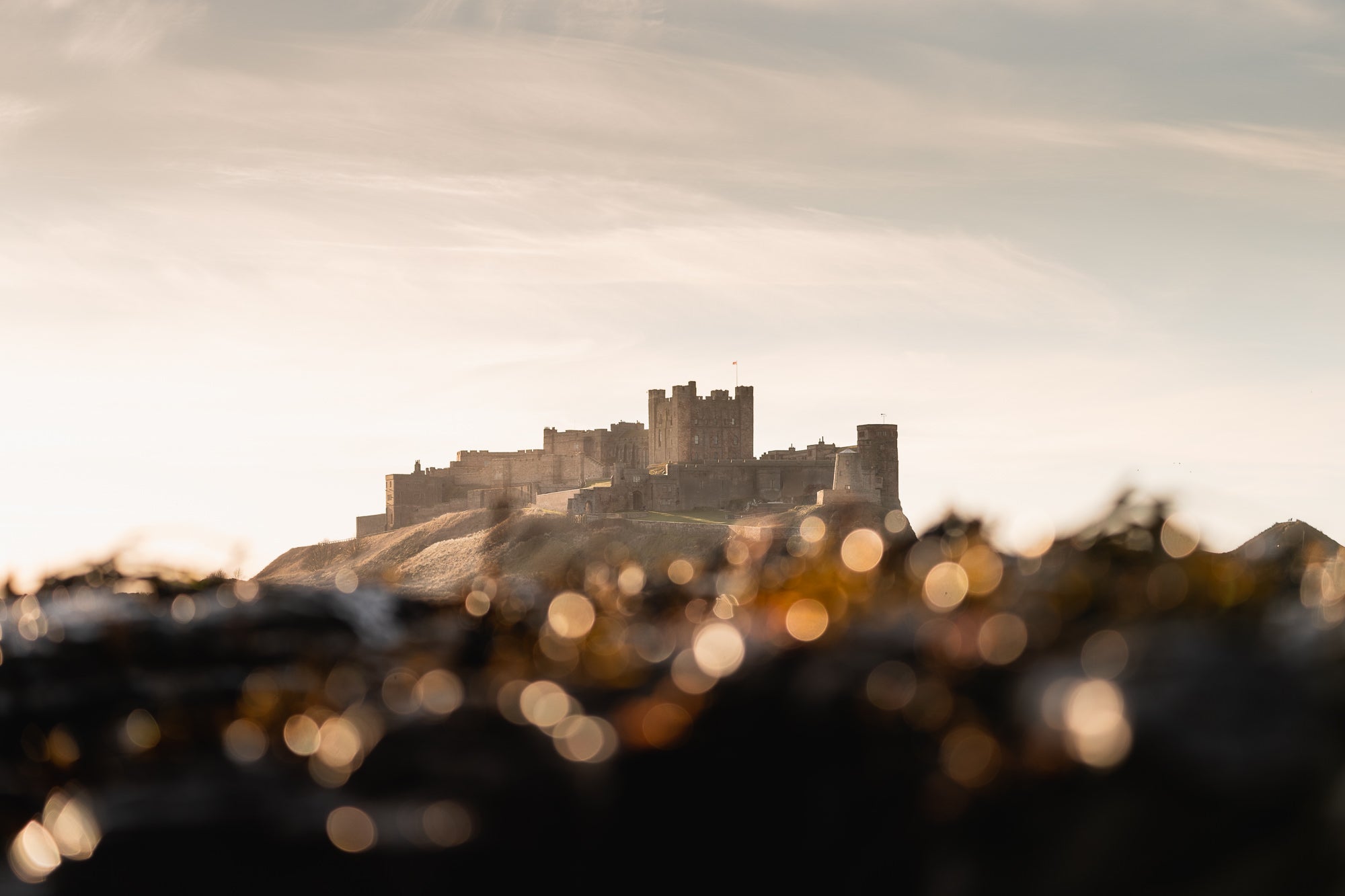
“Bamburgh Bokeh, using the telephoto compress the scene and create some foreground bokeh.” Photo by Daryl Scott Walker. Sony Alpha 7 III. Sony 100-400mm f/4.5-5.6 G Master. 1/800-sec, f/4.5, ISO 160
Something that not many discuss about this lens is that it is an incredibly powerful ‘macro’ lens. With its close focusing, distance you can zoom into 400mm and get some macro-like shots. Creating super interesting and abstract compositions.
Some might be put off by this lens’ aperture as it’s not 2.8! Yet, when you are shooting at longer focal lengths and your subject has separation from the background, then f/4 or even f/5.6 is all you need. I’ve got some incredible puffin shots where you’d think the shot was at f/2.8.
Sony 24mm f/1.4 G Master: Fast wide prime! Another one of my go to mountain lenses as its super fast, lightweight, and ideal for any opportunities for astro photography. With its fast aperture its a dream shooting at f/1.4, making your subject pop or providing that extra boost when light levels are at their lowest.
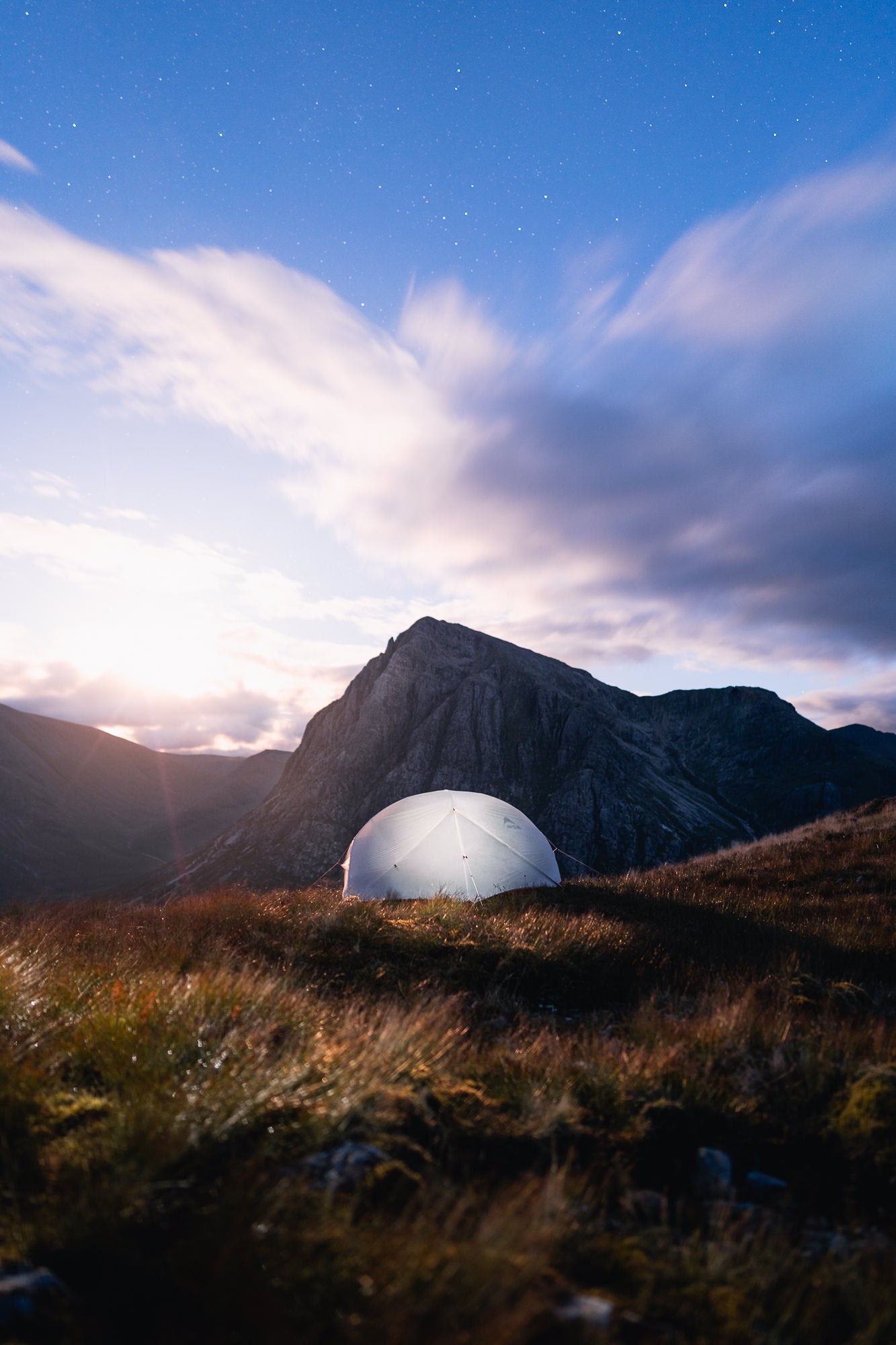
“Moon Lit Campsite, a full moon providing some magical light for our campsite in the Highlands.” Photo by Daryl Scott Walker. Sony Alpha 7 III. Sony 24mm f/1.4 G Master. 10 sec, f/1.4, ISO 500
I also enjoy shooting with this lens in crop mode on the Alpha 7 IV as it offers an almost 35mm field of view, which is my favorite focal length. So I can have two lenses in one when I know carrying all of my lenses isn’t an option.
Sony 35mm f/1.8: This lightweight prime is exceptional, my fave focal length and its a dream to use. Razor sharp images even wide open and it only weighs 280g! So I barely notice this in my bag. This is another lens that has macro-like qualities with its super close focussing distance. 35mm to me provides that natural focal length for all images, whether its landscapes, people or cars, not too wide, not too tight. With its f/1.8 aperture its also ideal for low light situations.

“Camp Blue Hour, once the sun had set the 35mm came out to get some blue hour shots of the camp.” Photo by Daryl Scott Walker. Sony Alpha 7 IV. Sony 35mm f/1.8. 1/100-sec, f/1.8, ISO 100
Pairing this lens with an 85mm telephoto prime is my go to for commercial work and weddings. 35 / 85 complete each other so well and you end up with a good mix of images to help tell a story.
I do like shooting with primes as variables are thrown out the window. You only have one focal length to work with so you have to think more about the image and the composition. Pardon the pun but it helps put me in the zone and focus on what I am shooting at the time.
Sony 50mm f/1.8: This lens accompanies my zooms on a trip so I have the option of a prime in case of portraits or the light levels are a little too low for f/2.8. One of the least expensive and lightest lenses you can buy and it offers incredible results. I took this with me to Iceland last winter and it was much needed due to the low light in the mornings.
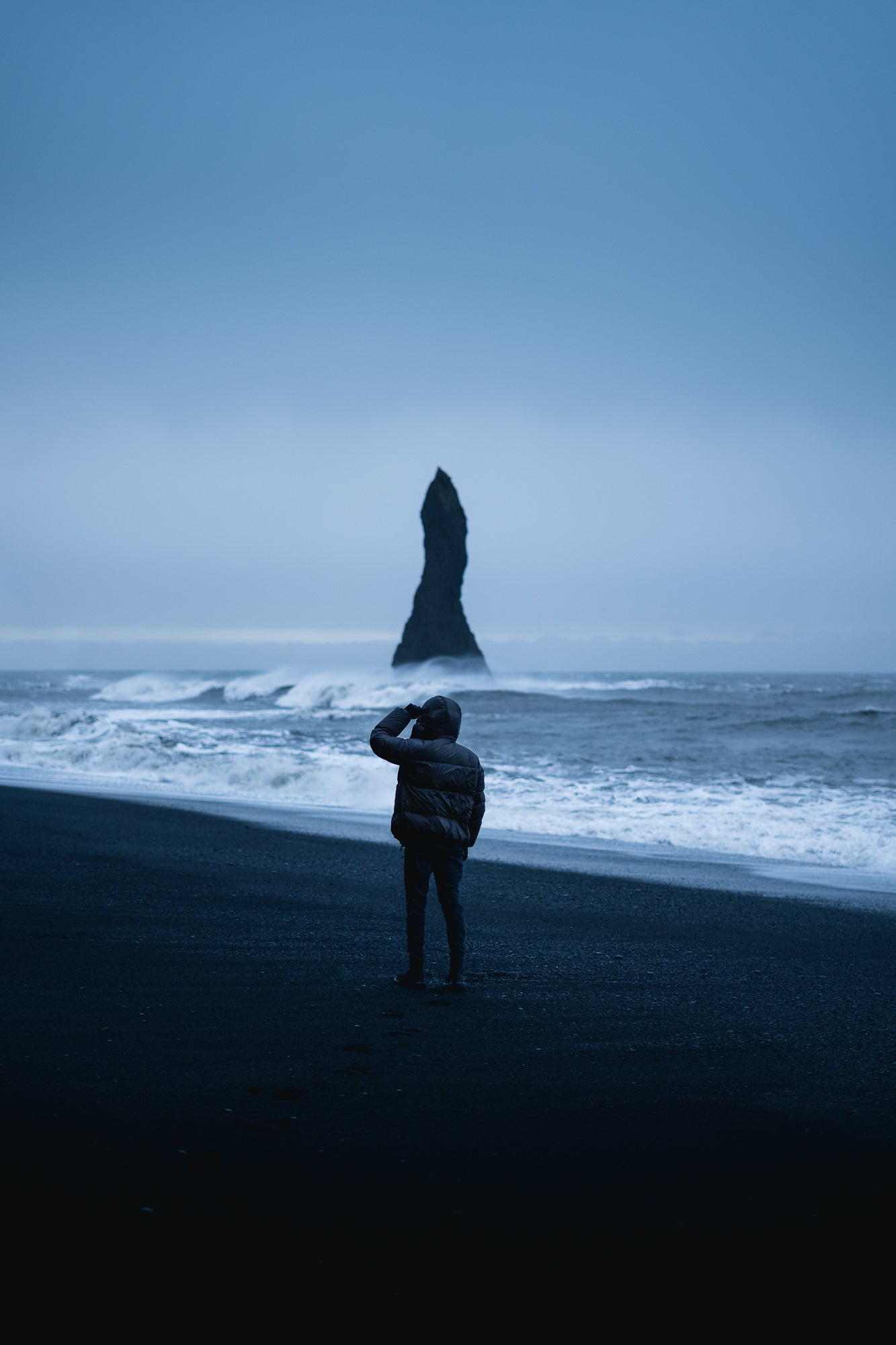
“Reynisdrangar Blue Hour, with a cloudy sunrise the light level was low, ideal for the f/1.8 of the 50mm.” Photo by Daryl Scott Walker. Sony Alpha 7 IV. Sony 50mm f/1.8. 1/250-sec, f/1.8, ISO 400
Sony 85mm f/1.8: As previously mentioned this lens supplements my 35mm to help tell a more varied story of a place, product, vehicle or people such as at weddings. What I love about this lens how it renders the image at 85mm, everything looks dreamy and compressed. The bokeh is something that brings me back to using it time and time again.
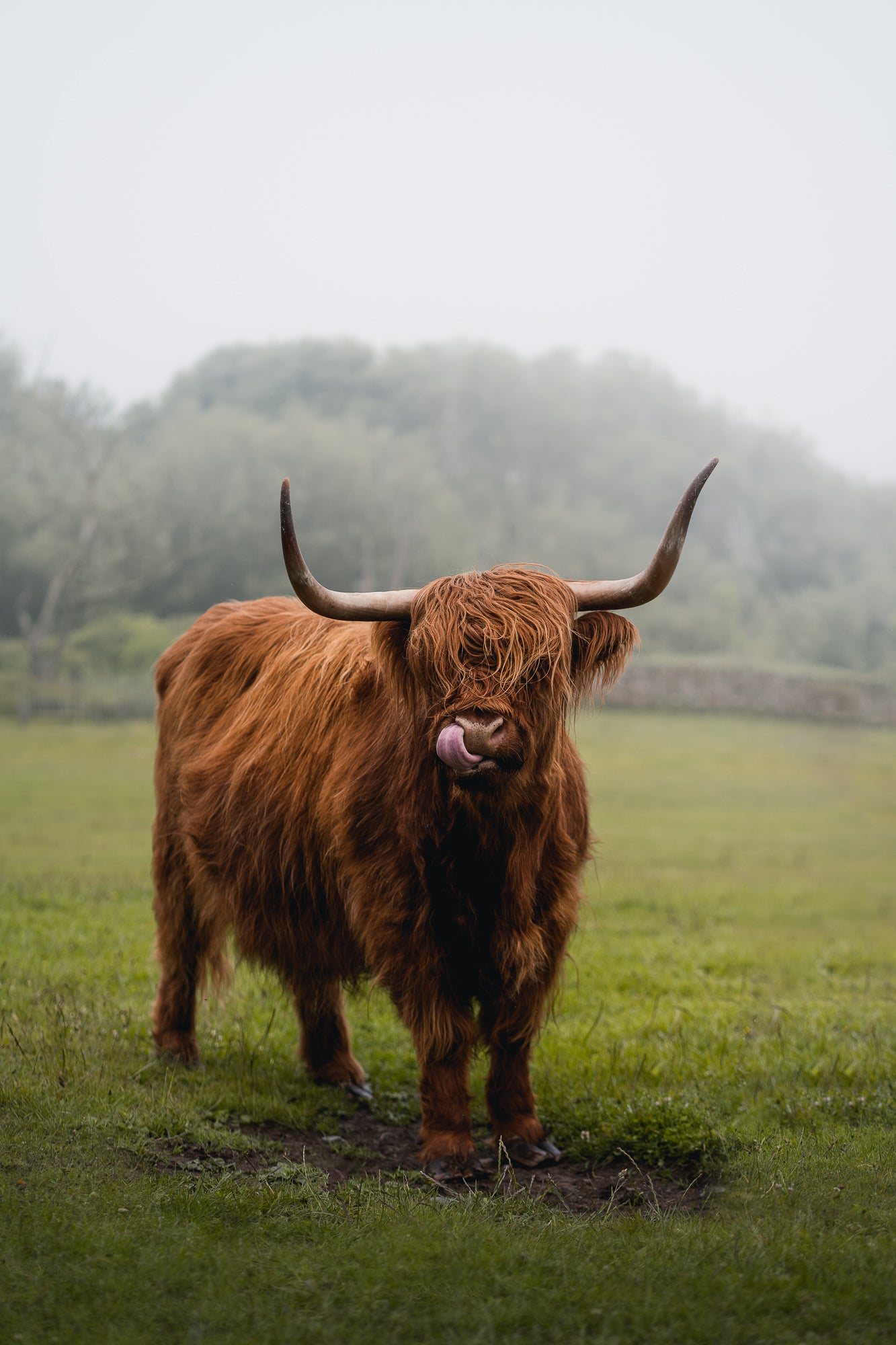
“Highland Cow, a beautiful cow found in my local county of Northumberland.” Photo by Daryl Scott Walker. Sony Alpha 7 III. Sony 85mm f/1.8. 1/800-sec, f/2.8, ISO 100
As with the 35mm f/1.8, the 85mm is razor sharp, lightweight and I really like the addition of the custom button and the AF / manual switch.
Sony 2.0X Teleconverter: It’s not often I’ll use the 2.0x teleconverter as sometimes it is too much when paired with the 100-400mm GM, but there is the odd occasion where I want to make sure I’m not intruding on wildlife and I’d like to be a little closet to my subject for a tighter profile shot.

“Atlantic Puffin, using the extra reach to get a portrait of the beautiful puffin.” Photo by Daryl Scott Walker. Sony Alpha 7 III. Sony 100-400mm f/4.5-5.6 G Master + 2X Teleconverter. 1/400-sec, f/11, ISO 250
I’ve been experimenting locally with finding alternative perspectives which are usually not possible at shorter focal lengths and last year managed to grab one of my favorite shots of my local lighthouse.
Accessories
Bag: Lowepro Whistler 450 AW: A bag I’ve had since 2016 and one that I’ve tried to replace with new models over the years. I still however keep coming back this bag due to its versatility, comfortable straps and weather sealing which is important when out in the field. The Lowepro allows me to carry all of my kit for any adventure. With its large internal camera storage unit, I typically carry the 24-70mm GM, 100-400mm GM, 50mm f/1.8, both drones, drone controller and the A7IV plus accessories.
Camera Clip: Peak Design camera clip, attaches straight to the strap on my bag allowing me to mount my camera to the strap and then I can unclip in seconds to capture something which happens spontaneously.
Camera Cage: I use a small rig cage on one on my Alpha 7 IV’s so it can be made more into a cinema camera of sorts with top handle, side handle and provides mounting options for microphones, monitors and lights.
Camera Strap: Peak Design Slide Lite, for. The odd occasion where I don’t have a bag with me.
Compact Shotgun Mic: Rode Video Micro, small and mighty microphone that I use for all of my on camera video work.

Photo by Daryl Scott Walker. Sony Alpha 7 III. Sony 100-400mm f/4.5-5.6 G Master. 1/500-sec, f/5.6, ISO 100
Drones: I have two in my arsenal and they provide additional perspectives sometimes not possible from the ground.
Filters: I carry variable ND filters, a circular polarizer and a glimmer glass filter.
Gimbal: I’ve recently added a gimbal i to my kit for some of my commercial work. It is super compact, lightweight and easy to set up.
Head Torch: Black Diamond Storm 500-R, rechargeable head torch, ideal for the early and late missions in the hills.
Lens Cloth & Blower: These are a must when out in the field. And a top tip when you are out in the rain, use a lens blower only to get rid of the water from your front element. Means your lens cloth stays dry!
Monitor: Atomos Shinobi 5” monitor to check my exposure, framing etc when the camera is rigged up.
Tripod: Peak Design Carbon Travel Tripod, an incredible tripod and so so light. I used to leave my tripod at home but this one isn’t cumbersome and its quick and easy to set up.
See more of Daryl Scott Walker’s work on Instagram @darylswalker.

